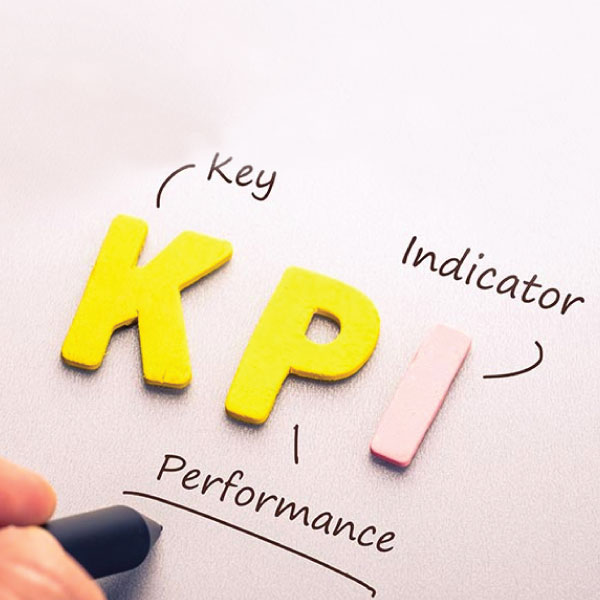When it comes to both virtual events and physical events, key performance indicators (KPIs) are important when it comes to measuring how successful the event was and to assess how the event can be improved in the future.
With the emergence of COVID-19 in the year 2020, the ratio of virtual events just got tripled. During the course of time it became a clear fact, virtual events are here to stay and not just a pandemic driven rage.
The virtual events benefits are ample right from global event outreach to real-time data analytics. But, transiting from live physical events to virtual ones leaves many event planners and marketers with a common concern of measuring event’s ROI and its success.
The answer to all the concerns is: Be clear in the purpose of hosting a virtual event before setting your virtual event KPIs. Whether you want to host a virtual event to increase traffic, create brand awareness or generate more qualified leads, the objective of organising the event should be clear before setting up KPIs for the virtual event.
This blog explores some of the most important virtual event KPIs for events like virtual conferences, summit, expos, trade shows etc.
Table of Contents
KPIs to Measure Event Success
So, without much adieu, let’s take a look at the best indicators to measure the success of virtual/hybrid events.
#1 – Event Check-Ins
One of the biggest benefits of using virtual events software is that it’s really easy to get statistics for your virtual event. One of the most important statistics, however, is just as easy to ascertain when it comes to physical events.
Event check-ins refer to the number of attendees who come to the event. While the absolute value of event check-ins is important, it is equally important to use some context for this KPI. For example, comparing the number of event check-ins to the number of total registrations is a good idea.
Also Read: Virtual Events: Planning, Strategy and Execution
#2 – Audience Retention
It might sound pretty simple but one of the best ways to understand how successful your event was is to simply ask the attendees. If you’re hosting a virtual event, it is really easy to survey your attendees as every virtual events platform allow you to create a wide range of surveys for attendees.
It is important to ask the right questions when it comes to attendee surveys. In case of virtual events, it is vital to include questions like how was the virtual lobby experience, was there any buffering issues, etc.
The idea is to get clean and quantifiable data so your insights can actually reflect satisfaction levels of the attendees.
Here are some ways you can gain attendees insights during virtual events and measure your virtual event KPIs:
-
Check the number of questions asked during Q&A sessions
When your attendees are interested in your event they get actively involved in Q&A sessions held during the event. Measure the number of questions asked during the speaker’s Q&A sessions. It helps in gaining valuable attendee’s insight and measure the success of the event by identifying how many attendees are engaged during the session.
-
Check the Response Rate for Live Polls
Measuring the live polls response rate is one of the most valuable virtual events KPIs to measure the event success.
-
Check post event survey responses
Checking post event survey responses is another important KPI for virtual events to measure the success of the event. People only give feedback when they thoroughly enjoyed the event or are extremely disappointed with the one.
#4 – Active Community Members
When it comes to virtual events setup, one of the steps is to create a community around the event which helps in promoting the event and getting the word out.
The number of active community members can also act as a KPI for virtual conferences, summit, expos, trade shows etc as they help in ascertaining and gauging the interest level for the event itself.
#5 – Community Engagement
Along with measuring the size of the community, the level of community engagement is also a key performance indicator. For example, one of the key numbers to check is the number of messages that are being exchanged in the community.
For a lot of attendees, the goal of attending virtual conferences/summit/expos/trade shows etc is to network and make connections. This is why community engagement matters because higher engagement leads to more networking and a better experience for the attendees.
Also Read: How To Execute Virtual Events And Virtual Conferences?
#6 – Speaker Engagement
When it comes to events that use virtual conferencing, it is really easy to check how the attendees are engaging with each individual speaker. This is another KPI that you should watch out for as it is an important and quantifiable metric to determine how the audience is reacting to the speakers in general.
Most virtual event software can provide direct reports on all speakers with important stats clearly highlighted for every single speaker.
#7 – Social Media Mentions and Engagement
All physical, virtual, and hybrid events in 2020 should have a social media component. It really helps in getting the word out and promoting the event which brings us to the next KPI you should watch out for.
Social media mentions and engagement for your event’s hashtag or page is a vital stat that helps in demonstrating the success of your event and it is a really good idea to keep track of the mentions and the engagement you receive on social media platforms.
Also Read: 20 Tips For A Successful Virtual Event
#8 – Total Registrations
This might be an obvious one but the total number of registrations for your event is a really important KPI. Ideally, the registration for any major event should start months before the actual event itself. The registrations should be tracked on a monthly basis to get a clear idea of the sales.
Once you have the segregated data, you can get interesting insights about your data such as which month had the highest registrations, what was the best source for the registrations, and more.
Any decent virtual events platform provides an in-built feature for analytics. It’s really easy to quantify this KPI for any kind of event.
#9 – Gross Revenue
Even though revenue should never be the only KPI, it is still an important one for most types of events. Ideally, you should measure the actual revenue against the projected revenue to find out if there were any discrepancies, positive or negative.
Of course, as mentioned above, the gross revenue will depend a lot on the industry and the type of event and it should be compared with the total costs of the event to find how well the event actually did.
Also Read: #8 Features To Consider In A Virtual Conference Platform
#10 – Sponsorship Page Engagement
Sponsors are important for events of any size and it is important to provide a way for the sponsors to know exactly how well the event is perceived in general and for their brand. While you might have given them an elaborate virtual event walkthrough before your virtual event, it is important to provide them with a quantifiable metric to justify their investment.
When it comes to virtual events, it is vital to provide sponsors with detailed statics about the engagement on their page that are a direct result of your investment.
#11 – Sponsor Revenue
It is important to measure the direct revenue provided by your event to the sponsor. Sponsor revenue is indeed a vital KPI for virtual conferences, summit, expos, trade shows etc.
#12 – Returning Attendees
While the total number of attendees is important for all virtual events, it is also important to count the number of attendees that are returning i.e. attendees who have attended previous events hosted by you.
Virtual event software can also include a CMS aspect which means you can track the attendees and easily ascertain the number of returning attendees versus the number of new attendees.
While it is important to get returning attendees, it is also important to ensure you get a decent number of new visitors with each event. Ideally, there should be a healthy mix of new and returning attendees.
Also Read: 8 Type Of Events That Can Go Virtual During Pandemic
#13 – Qualified Sales Leads
The definition of a qualified lead will depend on the event and the hosting company. It is a good idea to define what a qualified sales lead means during the virtual events setup phase.
Of course, not all events are meant to generate sales leads but leads are always a good KPI when it comes to events like trade shows. Qualified leads are just a filtering mechanism to ascertain the quality of leads received.
#14 – Pipeline Generated
In the world of B2B events, the pipe generated by the event can be a pretty great KPI. If the goal of the event is to generate leads, it can be a good idea to link leads and the estimated sales value of those leads as a KPI for the event.
Of course, it is important to be accurate when it comes to estimating the sales value for the leads and ensure your sales team does so in an accurate manner with proper attribution to the contact or sales opportunity.
#15 – Customers Acquired
Customers acquired is another important KPI to measure the event success along with the number of qualified leads and pipeline. The numbers of customers acquired can be tracked online easily by a virtual event platform like Dreamcast. But, it can take a bit of work setting it up successfully to provide a clear KPI.
#16 – Cost Per Customer Acquisition
Lastly, the cost per every customer acquired is a really important KPI. Especially, for the events which are hosted by companies specifically to acquire more customers for their product.
The cost per customer acquisition is important because not only does it help to measure the event’s success but also helps in measuring the acquisition cost for the company which can be helpful in marketing in general.
Also Read: A Look At The Future Of Events In The Post COVID World
Host a Virtual Event with Dreamcast Today!
Experience the best of virtual events with Dreamcast’s virtual events platform in a safe and secure digital environment. It offers endless possibilities to expand your reach and make your virtual event more accessible to a large spectrum of audiences globally.
Increase engagement with interactive features like live chats, polls surveys, social wall, games and so keeping the audience hooked throughout the event. Apart from it, Dreamcast enables the power of organizing customised booths, event walkthrough, offer seamless navigation, and more!




















